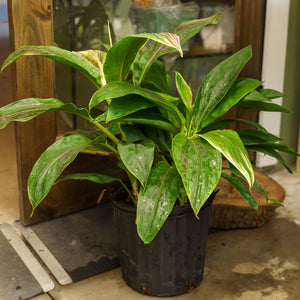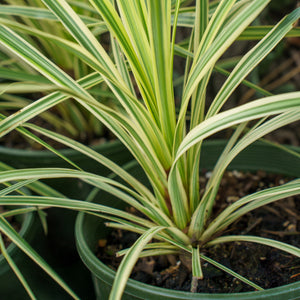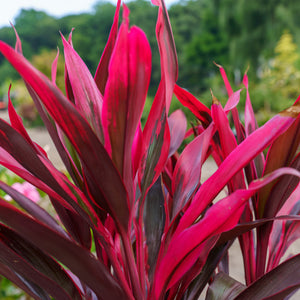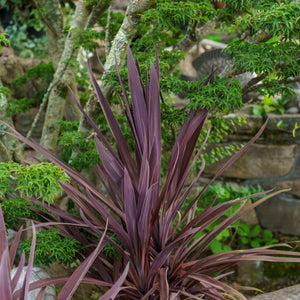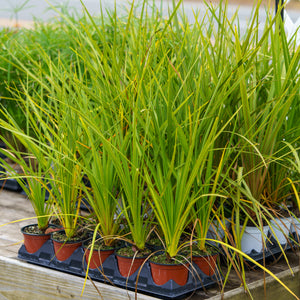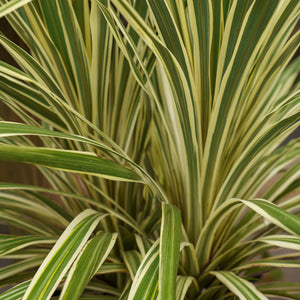The Cordyline Guide
Cordyline, with its dramatic foliage and vibrant colors, brings a touch of the tropics to any garden or indoor space. Known for their bold, sword-like leaves and striking appearance, Cordyline plants are perfect for adding an eye-catching focal point to borders, containers, and landscapes. These plants are admired for their ability to thrive in a variety of conditions and their minimal maintenance requirements. Whether you're aiming to create a tropical paradise, enhance your indoor plant collection, or add a splash of color to your garden, Cordyline offers a captivating and versatile solution.
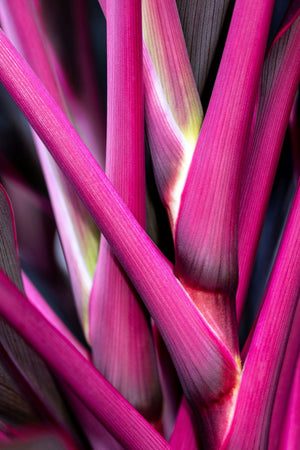
About
Cordyline is a genus of about 15 species of evergreen trees and shrubs in the family Asparagaceae, native to the Pacific Islands, New Zealand, Australia, and Southeast Asia. These plants are valued for their ornamental foliage, which ranges in color from green and red to pink, purple, and yellow. The leaves are often long, sword-shaped, and can add a dramatic vertical element to gardens and indoor settings.
Cordyline plants are known for their hardiness and adaptability, making them suitable for a variety of climates and conditions. They can be grown outdoors in tropical and subtropical regions and as houseplants in cooler climates. Cordylines can also produce small, fragrant flowers, although they are primarily grown for their striking foliage.
Popular varieties include Cordyline fruticosa (Ti plant), Cordyline australis (Cabbage tree), and Cordyline terminalis. Each variety offers unique characteristics and color variations, making them a favorite among gardeners and plant enthusiasts.
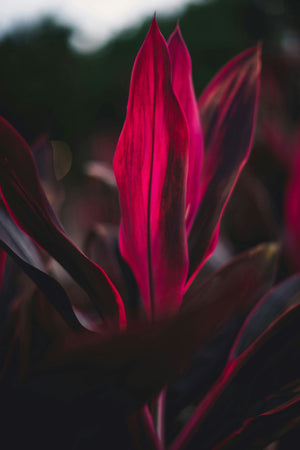
Planting
Creating the right environment is essential for Cordyline to flourish. Here are key planting tips:
- Soil: Cordyline prefers well-draining soil rich in organic matter. A mix of potting soil, perlite, and compost works well to provide the right balance of moisture retention and drainage. Avoid heavy, waterlogged soils that can lead to root rot.
- Light: Provide bright, indirect light for optimal growth. While Cordyline can tolerate lower light conditions, their vibrant colors and growth are more pronounced in brighter environments. Protect from intense direct sunlight, which can scorch the leaves.
- Watering: Keep the soil evenly moist but not soggy. Water thoroughly, allowing the top inch of soil to dry out between waterings. Reduce watering in the winter months when growth slows.
- Humidity: Moderate to high humidity levels are preferred. Increase humidity by misting the leaves, placing a humidifier nearby, or setting the pot on a pebble tray filled with water.
- Temperature: Maintain warm temperatures between 65-85°F (18-29°C). Avoid exposing Cordyline to cold drafts or sudden temperature changes.
- Container: Choose pots with drainage holes to prevent waterlogging. Ensure the container is appropriately sized to accommodate root growth and stability.
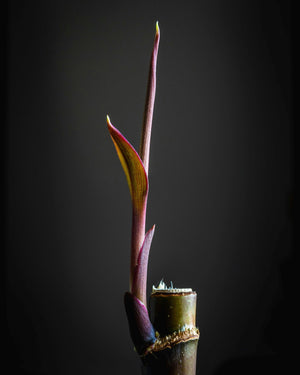
Care
Cordyline plants are low-maintenance, but attention to their needs ensures healthy growth and vibrant foliage:
- Watering: Water consistently, allowing the soil to dry slightly between waterings. Use filtered or distilled water to avoid leaf spotting caused by hard water.
- Fertilizing: Feed Cordyline with a balanced, water-soluble fertilizer diluted to half strength every 4-6 weeks during the growing season. Avoid over-fertilizing to prevent salt buildup.
- Pruning: Remove yellowing or damaged leaves to maintain a clean appearance. Prune back stems to encourage bushier growth as needed.
- Pests and Diseases: Inspect regularly for pests like spider mites, mealybugs, and aphids. Treat infestations promptly with neem oil or insecticidal soap. Proper watering and humidity management can prevent common issues.
- Repotting: Repot every 2-3 years or when the plant outgrows its container. Use fresh soil and a slightly larger pot to accommodate growth.
- Leaf Care: Wipe leaves gently with a damp cloth to remove dust and enhance photosynthesis. Avoid using harsh chemicals.
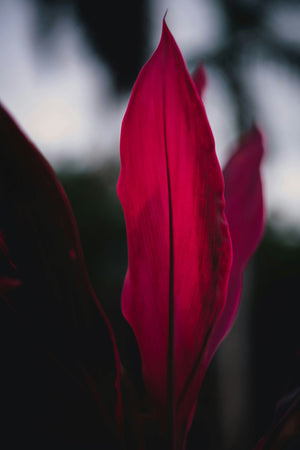
How To Use
Cordyline’s bold foliage makes it a versatile addition to various settings. Here are some creative uses:
- Indoor Decor: Use Cordyline as a striking indoor centerpiece. Its vibrant colors and structural form bring a tropical touch to living rooms, kitchens, or bedrooms.
- Patios and Balconies: Plant Cordyline in decorative containers for outdoor spaces. Arrange in groups or as standalone specimens for visual impact.
- Tropical Gardens: Incorporate Cordyline into tropical landscapes alongside palms, ferns, and bromeliads for a cohesive, exotic look.
- Borders and Accents: Use Cordyline as a border plant or focal point in garden beds. Its tall, sword-like leaves add height and texture.
- Living Walls: Smaller varieties can be integrated into vertical gardens to add dynamic color and interest.
- Public Spaces: Cordyline is ideal for lobbies, restaurants, and other public spaces where low-maintenance plants with high visual appeal are desired.
Conclusion
Cordyline’s dramatic foliage and tropical charm make it a standout choice for indoor and outdoor spaces. With proper care and placement, these plants thrive in diverse environments, adding year-round beauty and interest. Their low-maintenance nature and adaptability make them suitable for gardeners and plant enthusiasts of all levels.
Whether enhancing a tropical garden, adding elegance to a patio, or creating an indoor focal point, Cordyline delivers vibrant color and structural beauty. Embrace the versatility and ecological benefits of Cordyline to transform your spaces into lush, tropical retreats.






